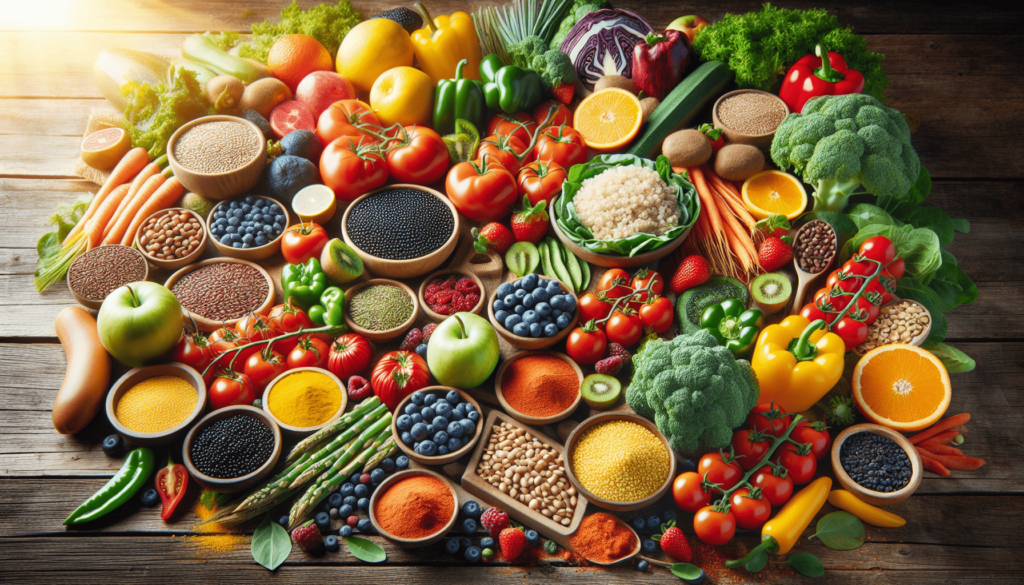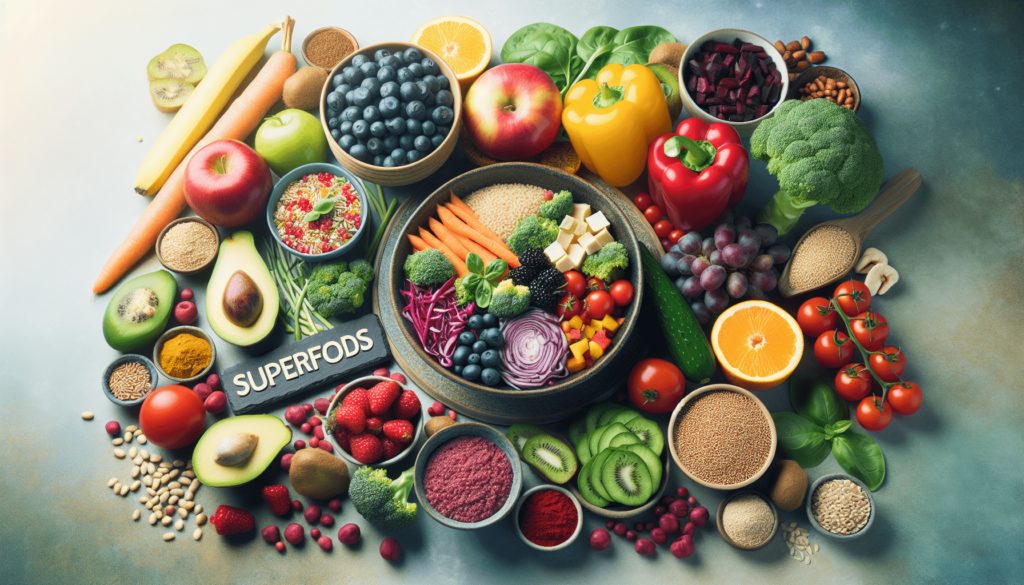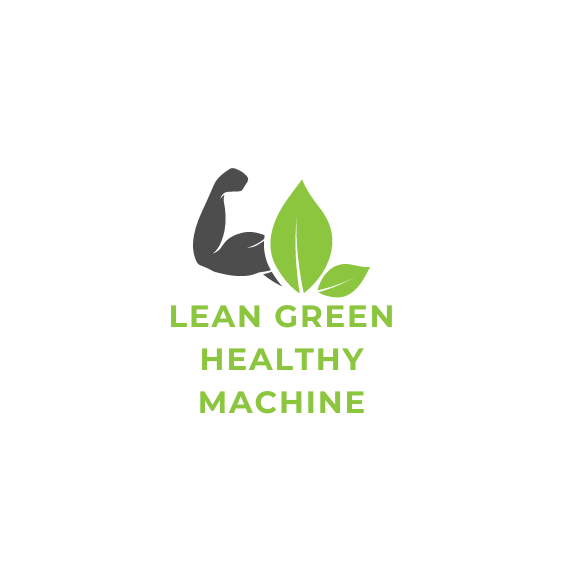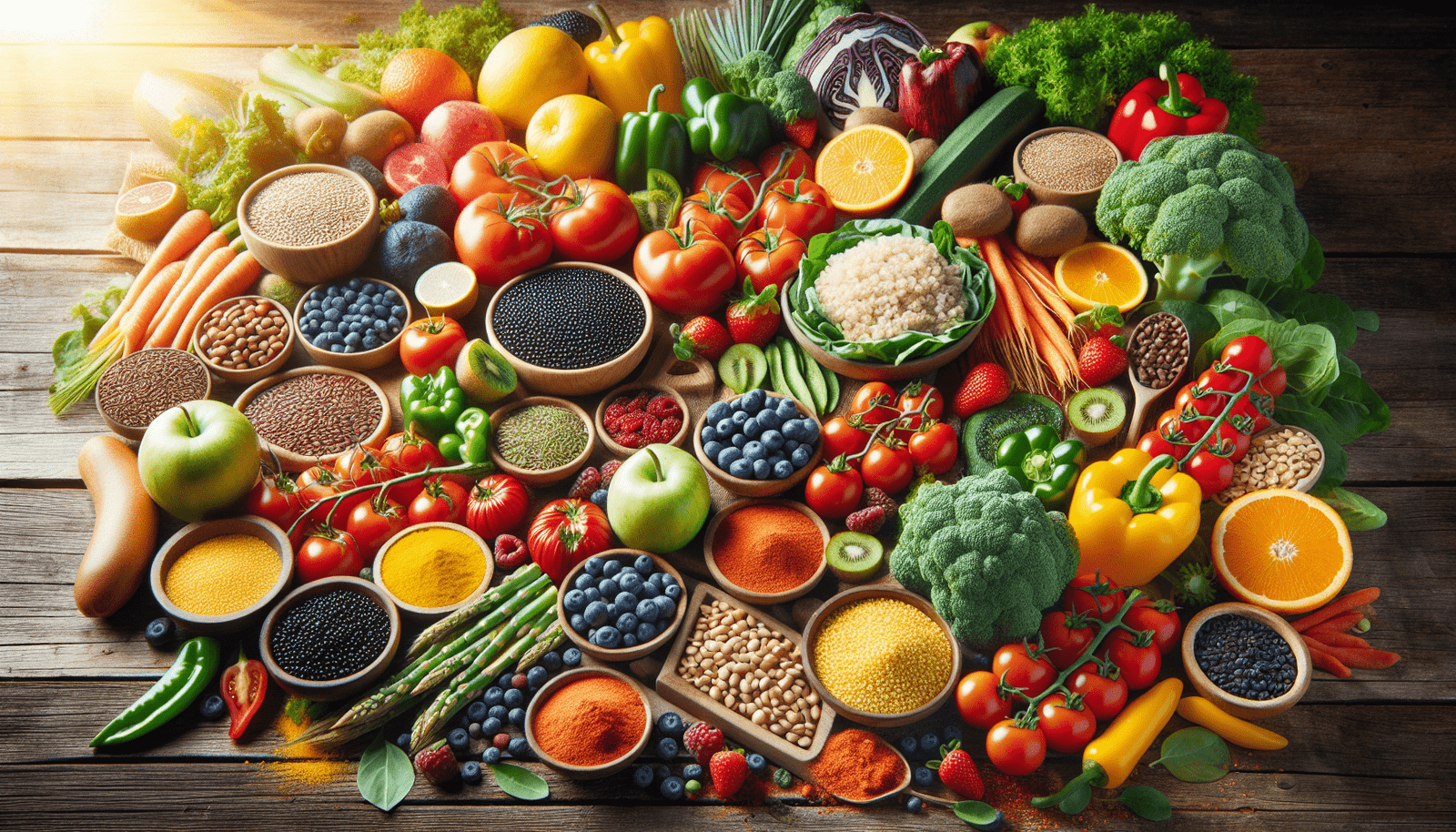Discover a world where healthy eating doesn’t break the bank with “healthy eating on a budget: 50 Affordable Superfood Recipes.” In this article, we unlock the secrets of nutrient-rich superfoods and their incredible disease-fighting potential, while also debunking myths and exploring the wonders of plant-based power and intermittent fasting. With a focus on targeted food choices for diabetes, cancer, and mental health, this article empowers you to make informed eating decisions, reduce stress, control inflammation, and boost your mood. Get ready to embrace a journey filled with delicious recipes and actionable tips that will fuel your transformation and unlock a future brimming with vitality.
Chapter 1: Introduction to Healthy Eating on a Budget
The importance of healthy eating
Eating a healthy diet is crucial for your overall well-being. It provides your body with the essential nutrients it needs to function properly, boosts your immune system, and helps prevent chronic diseases. However, many people believe that healthy eating is expensive and out of reach. In this article, we will show you that eating healthy on a budget is not only possible but also delicious and satisfying.
Challenges of eating healthy on a budget
One of the main challenges of eating healthy on a budget is the perception that healthy foods are more expensive than processed and unhealthy options. While it is true that some health food products can be pricey, there are plenty of affordable options available. Another challenge is finding the time and energy to prepare healthy meals when you’re on a tight budget. However, with proper planning and smart shopping strategies, you can overcome these challenges and make nutritious meals a regular part of your diet.
Benefits of incorporating superfoods into your diet
Superfoods are nutrient-dense foods that offer numerous health benefits. They are packed with vitamins, minerals, antioxidants, and phytochemicals that have been shown to reduce the risk of chronic diseases and improve overall health. By incorporating superfoods into your diet, you can boost your immune system, improve digestion, increase energy levels, and maintain a healthy weight. Best of all, many superfoods are affordable and readily available.
Overview of the article
In this article, we will guide you through the world of healthy eating on a budget. We will start by explaining what superfoods are and how they can benefit your health. Then, we will provide you with practical tips for eating healthy on a budget, including meal planning, smart shopping strategies, and utilizing affordable pantry staples. We will also offer advice on growing your own superfoods, even if you don’t have a green thumb.
To make it easier for you to incorporate healthy meals into your daily life, we have included a variety of recipes for breakfast, lunch, dinner, snacks, desserts, and smoothies. These recipes are budget-friendly and utilize affordable ingredients, including some of the top superfoods. Finally, we will provide you with additional tips and resources for food storage, affordable superfood substitutions, and online resources for budget-friendly recipes. Get ready to embark on a journey of healthy eating on a budget!
Chapter 2: Understanding Superfoods
What are superfoods?
Superfoods are nutrient-rich foods that are especially beneficial for your health. They are packed with vitamins, minerals, antioxidants, and other beneficial compounds that can help prevent diseases and improve your overall well-being. Some popular superfoods include berries, leafy greens, nuts, seeds, and fish. Incorporating these foods into your diet can provide a wide range of health benefits, from boosting your immune system to improving brain health.
The top superfoods for a healthy diet
When it comes to superfoods, there are many options to choose from. Some of the top superfoods for a healthy diet include salmon, blueberries, leafy greens (such as spinach and kale), quinoa, sweet potatoes, and avocados. These foods are not only packed with nutrients but are also versatile and delicious. By incorporating these superfoods into your meals, you can ensure that you are getting the essential nutrients your body needs to thrive.
The benefits of incorporating superfoods into your meals
Incorporating superfoods into your meals can have numerous benefits for your health. For example, salmon is rich in omega-3 fatty acids, which are essential for brain health and can help reduce the risk of heart disease. Blueberries are packed with antioxidants that can help protect against oxidative stress and inflammation in the body. Leafy greens are high in vitamins A, C, and K, as well as fiber, which can support digestion and promote a healthy gut. By including superfoods in your meals, you can nourish your body and support optimal health.

Chapter 3: Tips for Eating Healthy on a Budget
Meal planning and preparation
One of the most effective ways to eat healthy on a budget is by meal planning and preparation. By taking a few minutes each week to plan your meals, you can ensure that you have nutritious options available and avoid impulsive and unhealthy food choices. Prepare a shopping list based on your meal plan and stick to it when you go grocery shopping. This will help you avoid buying unnecessary items and save money.
Shopping smartly and seasonally
When shopping for groceries, it’s important to be a smart and savvy shopper. Look for sales, discounts, and coupons to save money on healthy foods. Additionally, try to buy seasonal fruits and vegetables, as they are often more affordable and taste better. Consider buying frozen fruits and vegetables, as they are usually less expensive than fresh ones and are just as nutritious. Don’t forget to compare prices and check out different stores to find the best deals.
Using affordable pantry staples
Affordable pantry staples can be a lifesaver when you’re on a budget. Stock your pantry with items like rice, beans, lentils, canned vegetables, pasta, and canned fish, as they are inexpensive and versatile. These pantry staples can form the base of many healthy and satisfying meals. They can also be combined with fresh ingredients or leftovers to create quick and delicious dishes.
Growing your own superfoods
If you have space and access to sunlight, consider starting your own garden to grow your own superfoods. Growing your own fruits, vegetables, and herbs is not only cost-effective but also rewarding. You can grow items like tomatoes, herbs, salad greens, and even berries at home. This way, you’ll have a constant supply of fresh and nutritious ingredients right at your fingertips.
Chapter 4: Breakfast Recipes
Spinach and mushroom omelette
This spinach and mushroom omelette is a nutrient-packed breakfast option that is easy to make. Simply whisk together eggs, sautéed spinach, mushrooms, and a sprinkle of cheese. Cook it on the stovetop, and you’ll have a delicious and satisfying breakfast in no time.
Quinoa breakfast bowl
Quinoa is a superfood that is packed with protein, fiber, and essential amino acids. In this recipe, combine cooked quinoa with berries, nuts, and a drizzle of honey. This breakfast bowl is not only nutritious but also filling and delicious.
Blueberry overnight oats
Overnight oats are a convenient and healthy breakfast option. In a jar, combine oats, milk (or plant-based milk), yogurt, and blueberries. Let it sit in the fridge overnight, and in the morning, you’ll have a ready-to-eat breakfast that you can take on the go.

Chapter 5: Lunch Recipes
Mediterranean quinoa salad
This Mediterranean quinoa salad is a refreshing and filling lunch option. Combine cooked quinoa with cucumbers, tomatoes, olives, feta cheese, and a drizzle of olive oil and lemon juice. This salad is packed with flavors and nutrients that will keep you satisfied throughout the day.
Black bean and sweet potato wrap
This black bean and sweet potato wrap is a hearty and satisfying lunch option. Simply roast sweet potatoes, mash them with black beans, and wrap them in a whole wheat tortilla. Add your favorite toppings, such as avocado slices and salsa, for an extra kick of flavor.
Kale and avocado salad
Kale is a nutrient-dense leafy green that is high in vitamins and minerals. In this recipe, massage kale with avocado, lemon juice, and your favorite seasonings. Add some chopped vegetables, nuts, and seeds for extra crunch and flavor. This salad is not only delicious but also packed with nutrients.
Chapter 6: Dinner Recipes
Salmon with roasted vegetables
Salmon is a nutritional powerhouse that is high in omega-3 fatty acids and protein. Roast salmon fillets with a variety of vegetables, such as broccoli, bell peppers, and carrots, for a complete and nutritious dinner. Drizzle with olive oil and your favorite seasonings for extra flavor.
Cauliflower fried rice
Cauliflower is a versatile vegetable that can be used as a substitute for rice in this healthy twist on fried rice. Simply pulse cauliflower in a food processor to create rice-like pieces. Sauté it with vegetables, eggs (optional), and soy sauce for a delicious and low-carb dinner option.
Sweet potato and black bean chili
This sweet potato and black bean chili is a hearty and flavorful dinner option. Simply sauté sweet potatoes, black beans, onions, and garlic in a pot with diced tomatoes and vegetable broth. Add your favorite spices, such as cumin and chili powder, for a warming and satisfying meal.
Chapter 7: Snack Recipes
Kale chips
Kale chips are a nutritious and crunchy snack that is easy to make. Simply tear kale leaves into bite-sized pieces, toss them with olive oil and a sprinkle of salt, then bake them in the oven until crispy. These homemade kale chips are a healthy alternative to potato chips.
Energy balls
Energy balls are a convenient and nutritious snack that you can take with you on the go. Simply combine dates, nuts, seeds, and your favorite flavorings, such as cocoa powder or vanilla extract, in a food processor. Roll the mixture into small balls and refrigerate until firm.
Homemade granola bars
Homemade granola bars are a healthier alternative to store-bought options. Combine rolled oats, nuts, dried fruits, honey, and nut butter in a bowl. Press the mixture into a baking pan and bake until golden brown. Cut into bars and enjoy a satisfying and wholesome snack.
Chapter 8: Dessert Recipes
Chia seed pudding
Chia seed pudding is a delicious and nutritious dessert option. Simply mix chia seeds with your favorite milk (or plant-based milk) and sweetener, such as honey or maple syrup. Let the mixture sit in the fridge until it thickens. Top with fresh fruits or nuts for added flavor and texture.
Avocado chocolate mousse
Avocado chocolate mousse is a decadent and healthy dessert option. Blend ripe avocados, cocoa powder, sweetener (such as dates or honey), and a dash of vanilla extract until smooth and creamy. Chill in the fridge for a few hours to allow the flavors to meld together. Serve with a dollop of whipped cream or fresh berries.
Mixed berry crumble
Mixed berry crumble is a comforting and satisfying dessert option. Mix your favorite berries with a sprinkle of sugar and a squeeze of lemon juice. Top with a mixture of oats, flour, butter, and sugar, then bake until the berries are bubbling and the crumble is golden brown. Serve warm with a scoop of vanilla ice cream.
Chapter 9: Smoothie Recipes
Green detox smoothie
This green detox smoothie is packed with nutrients and antioxidants. Blend together leafy greens, such as spinach or kale, with a variety of fruits, such as pineapple and banana. Add a splash of coconut water or almond milk for a creamy and refreshing smoothie.
Berry blast smoothie
The berry blast smoothie is a delicious and refreshing option that is rich in antioxidants. Blend together a mixture of berries, such as strawberries, blueberries, and raspberries, with yogurt or plant-based milk. Add a drizzle of honey or a sprinkle of chia seeds for extra flavor and texture.
Peanut butter banana smoothie
This peanut butter banana smoothie is a creamy and protein-rich option that is perfect for a quick breakfast or post-workout snack. Blend together ripe bananas, peanut butter, milk or plant-based milk, and a touch of honey or maple syrup. The result is a smooth and indulgent smoothie that tastes like a milkshake.
Chapter 10: Additional Tips and Resources
Food storage and preservation tips
Properly storing and preserving food can help reduce waste and save money. Use airtight containers or resealable bags to store leftovers and extend their shelf life. Utilize your freezer to store excess fruits, vegetables, and even cooked meals. Consider investing in food storage containers that help keep produce fresh for longer.
Affordable superfood substitutions
If you’re on a tight budget, there are affordable substitutions you can make when it comes to superfoods. For example, if salmon is out of your price range, you can try sardines or canned tuna, which are still good sources of omega-3 fatty acids. Instead of expensive berries, opt for frozen options, which are often more affordable and still offer health benefits.
Online resources for budget-friendly recipes
The internet is a treasure trove of budget-friendly recipes. There are numerous websites and blogs that specialize in creating nutritious meals on a budget. Some websites offer meal planning tools, where you can input your budget and dietary preferences to receive customized recipes and shopping lists. Take advantage of these resources to find tasty and affordable recipes that suit your needs.
In conclusion, eating healthy on a budget is not only possible but also enjoyable. By incorporating superfoods into your diet, planning your meals, shopping smartly, and utilizing affordable pantry staples, you can nourish your body while saving money. Whether you’re starting your day with a nutritious breakfast or enjoying a satisfying dinner, these recipes will help you make delicious and budget-friendly meals. Don’t forget to explore additional tips and resources for food storage, affordable superfood substitutions, and online recipe websites. Happy and healthy eating!

